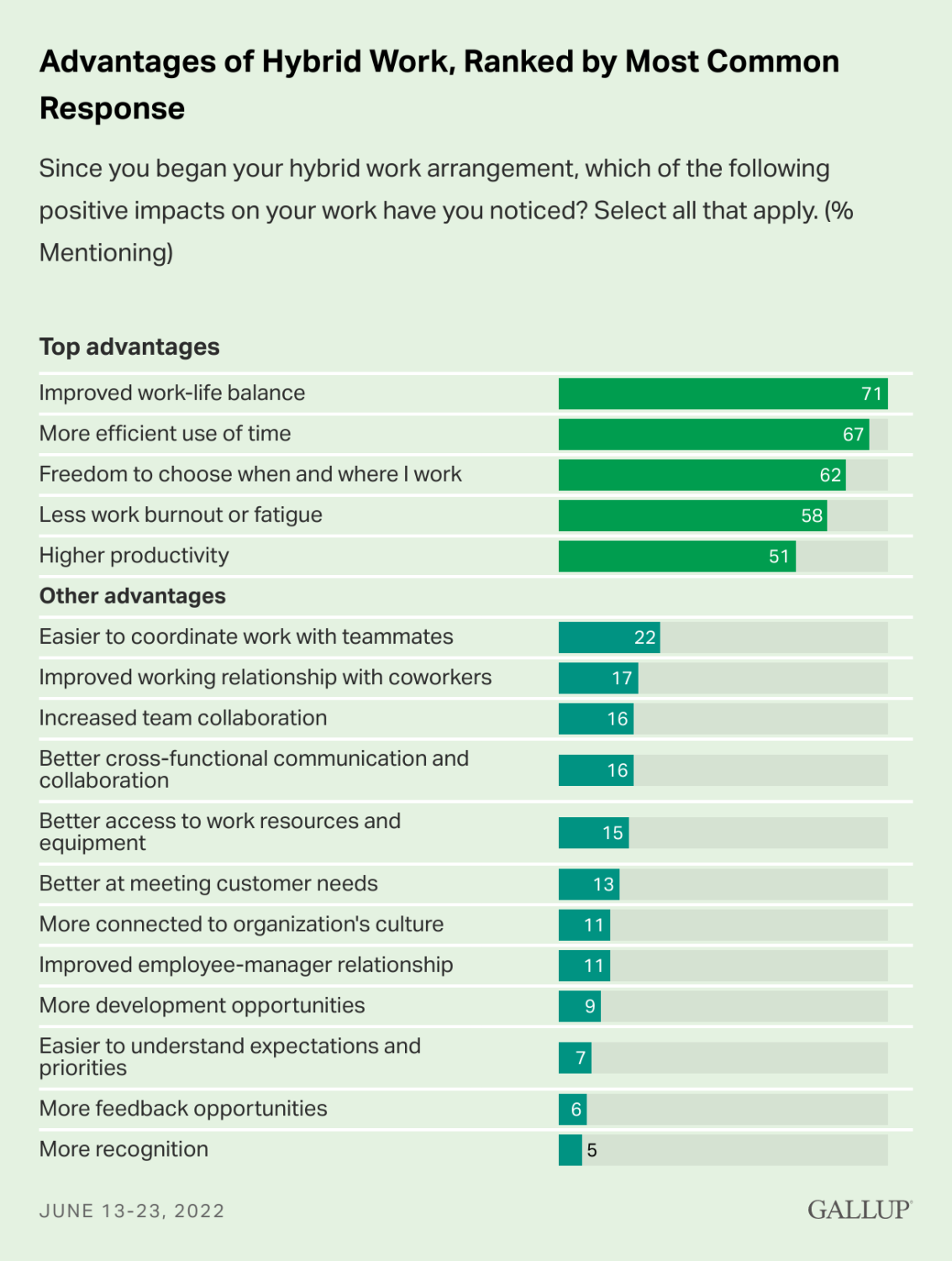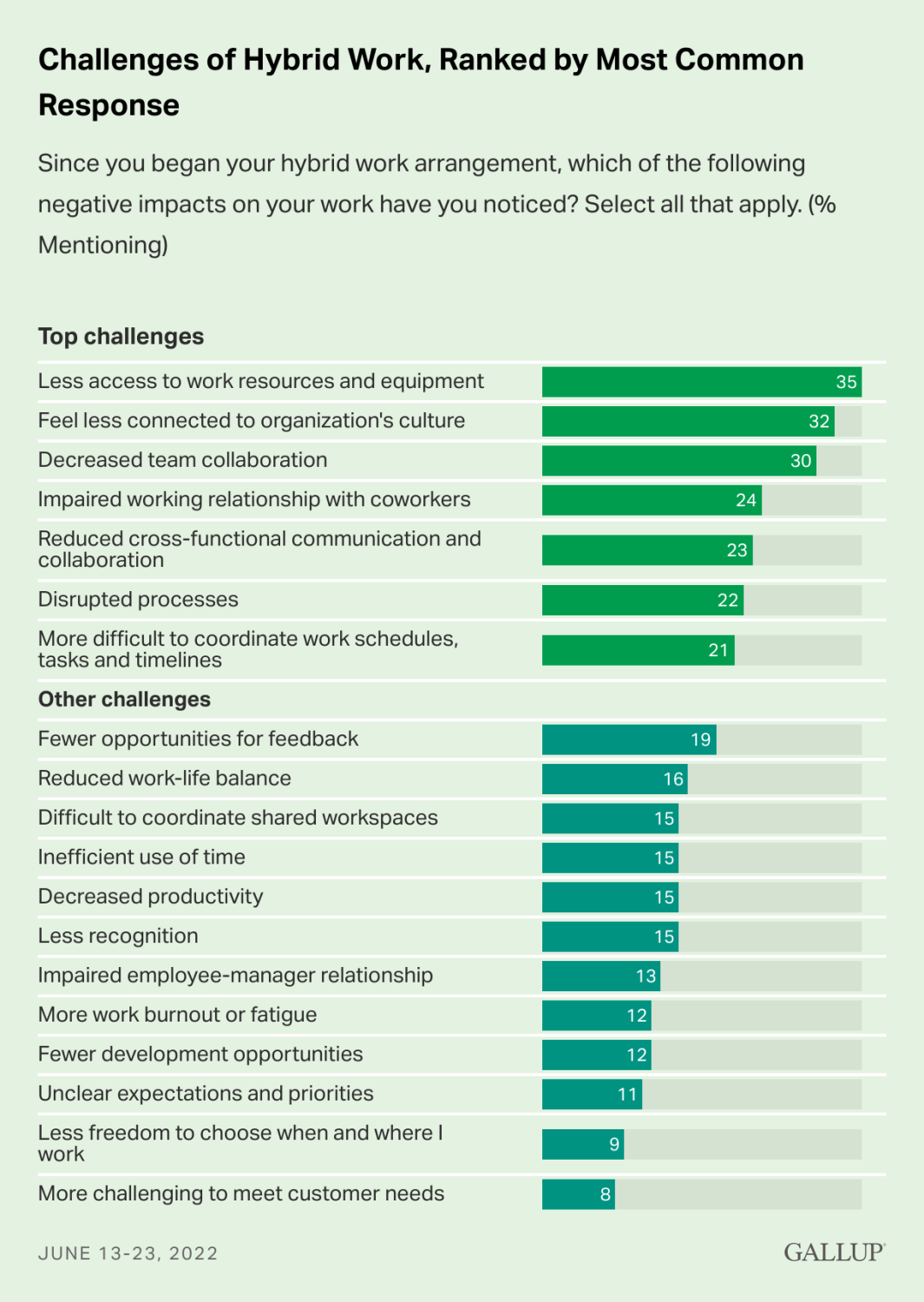Hybrid work: The Advantages and Challenges

Technology breakthroughs and changing workplace dynamics have led to a considerable transformation in the traditional idea of labor in recent years. This concept, which combines the advantages of both in-person office work and remote flexibility, has completely changed how businesses and people approach the workplace. We will discuss the idea of hybrid and remote working arrangements, as well as their benefits, drawbacks, and implications for the nature of work in the future.

To differentiate: In a fully remote organization, team members have the freedom to work from anywhere, without a central office. In a hybrid company, employees divide their time between a physical workspace and remote work, while having the option to work from home.
Let's dig into the advantages!

A survey conducted by Gallup.com on the advantages of hybrid work.
Flexible behavior that improves work-life balance:
One of the main benefits of hybrid and remote working models is the flexibility they provide. Employees are no longer bound by a rigid 9am to 5pm work schedule and are free to structure their working hours around their personal lives. This newfound flexibility allows individuals to find a better work-life balance, and according to research, it results in greater job satisfaction and lower stress levels. Commuting becomes a thing of the past and employees regain valuable time for pursuing personal well-being, family or other interests.
Unlock your productivity potential:
Research consistently shows that remote work can significantly improve productivity. Eliminating common distractions and interruptions in the office helps employees focus and complete tasks more efficiently. Hybrid and remote work models allow individuals to work during their most productive hours, such as the early morning and late evening, while providing an environment that suits their work preferences. The result is often better focus, more creativity, and better performance.
The financial benefits of hybrid work:
Both employers and employees benefit financially from hybrid and remote work models. Employees can benefit from significant cost savings by avoiding commuting-related costs such as transportation costs. Meanwhile, businesses can significantly reduce overhead costs, including office space, utility bills, and other operating costs. According to a survey by Global Workplace Analytics, businesses can save an average of $10,000 per year for each remote employee who works half of the time from home.
While hybrid and remote work models offer many benefits, they also present challenges that organizations face. Below are the challenges and simple steps to avoid them.

A survey conducted by Gallup.com on the challenges of hybrid work.
Hybrid work communication gap:
Ensuring effective communication and collaboration between team members in a hybrid environment requires the adoption of appropriate digital tools and fostering the remote work culture of open and transparent communication. Regular virtual meetings, project management platforms, and other collaboration tools help bridge the gap and induce teamwork.
Maintaining company culture:
Geographic distance can pose a risk to corporate culture. To meet this challenge, organizations must actively foster a sense of belonging and connection among their employees. Fostering virtual social activities, team building exercises, and shared experiences help maintain a strong organizational culture and foster a sense of belonging.
Fairness and Inclusion:
Remote work can create an inadvertent divide between employees who have more face-to-face interactions and those who work primarily remotely. Organizations should strive to create an inclusive environment where remote workers have equal access to resources, growth opportunities, and participate in decision-making processes.

The rise of hybrid and remote working models ushered a new era of work. As organizations leverage these models and address the challenges they pose, the future of work may become a hybrid environment where employees are free to choose the work environment that best suits their needs and preferences. Traditional office environments are evolving into flexible workspaces that foster collaboration and innovation, making remote work a viable option for a wide variety of occupations.




